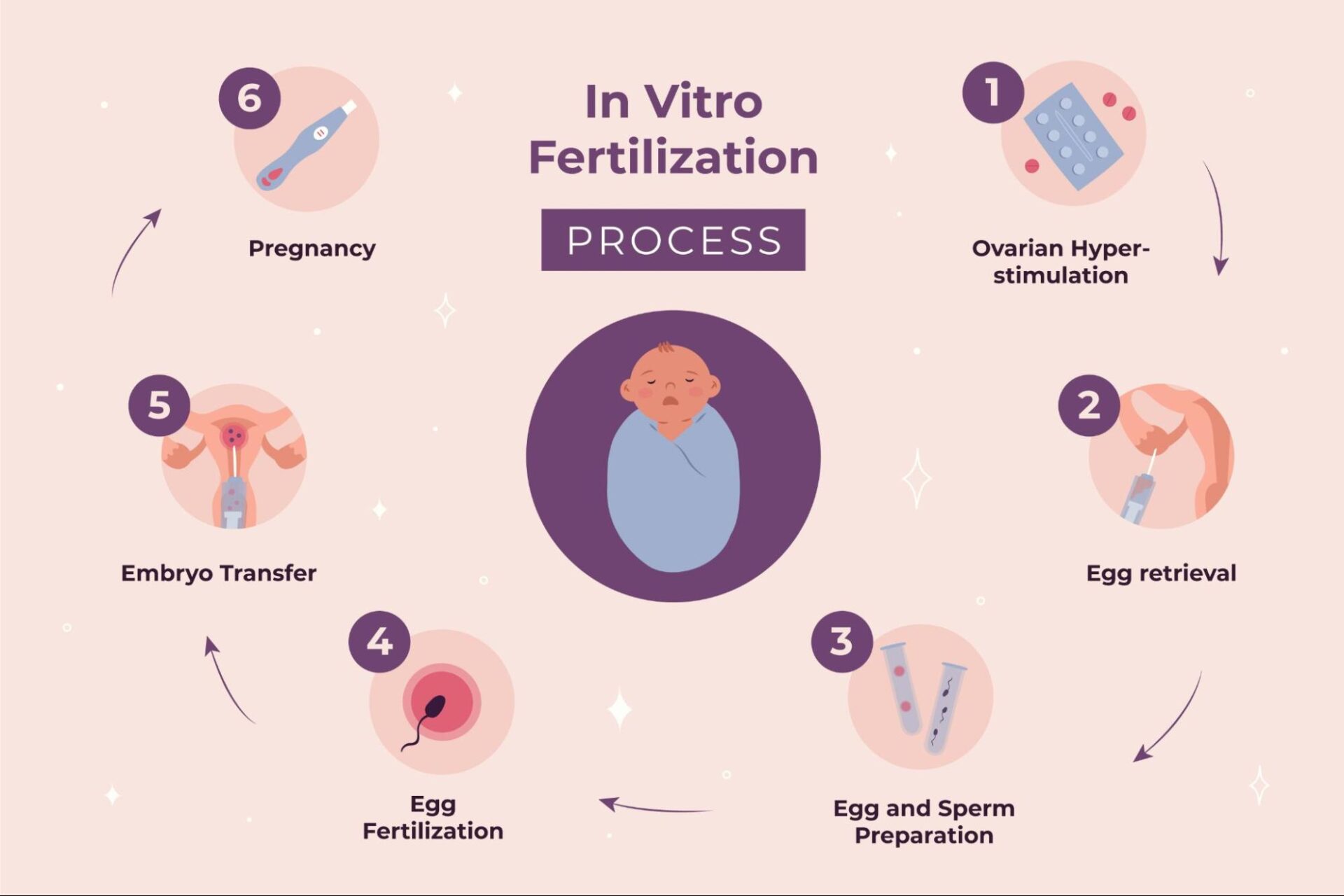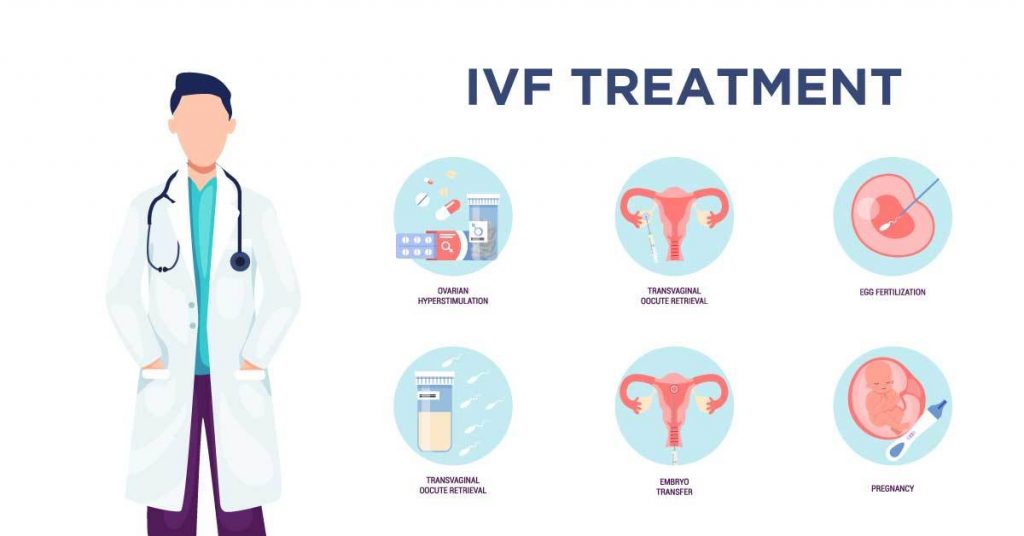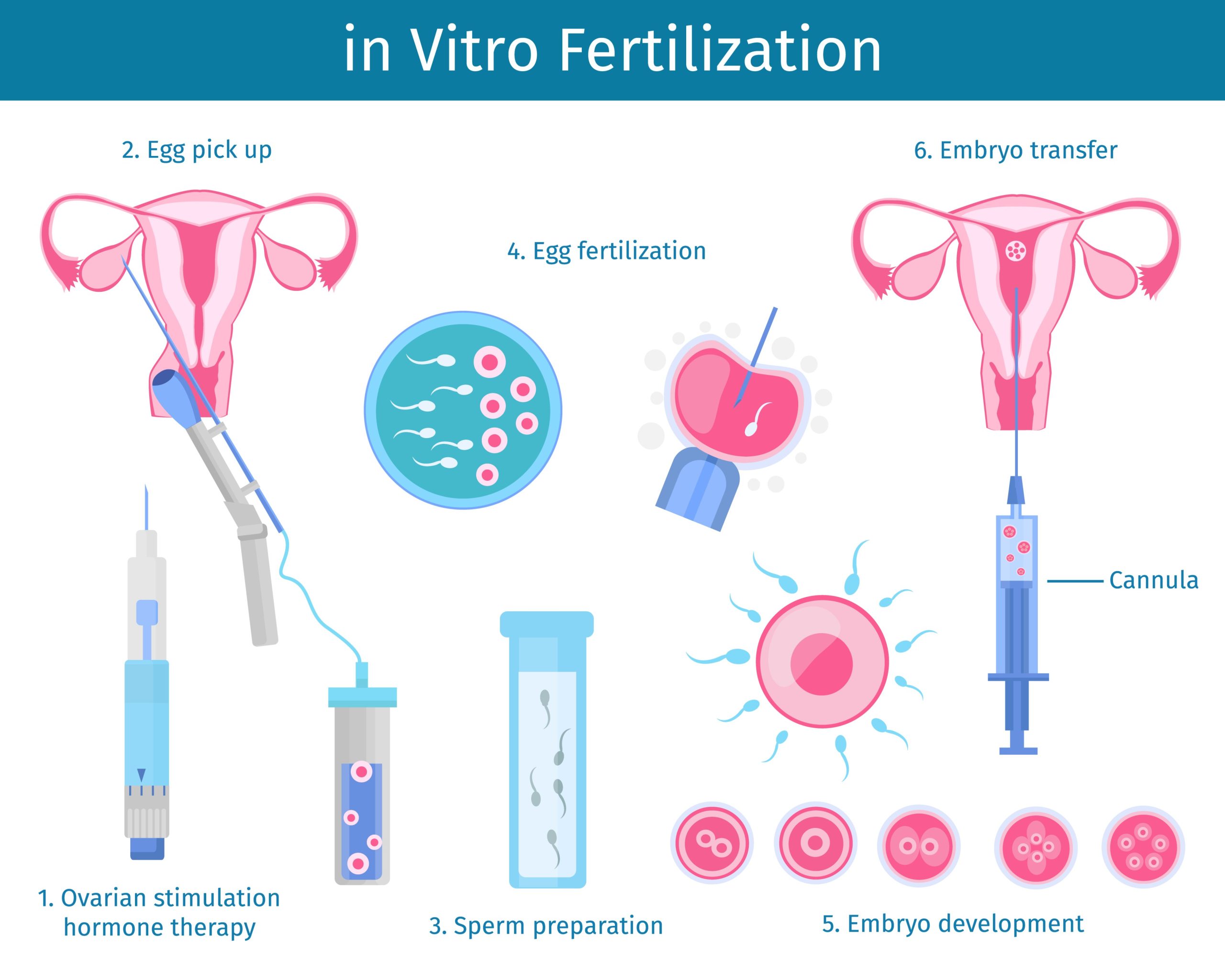How Long Is IVF Treatment?
If you’re thinking about in vitro fertilization (IVF), one of the first questions that might pop into your mind is, “How long is this going to take?” It’s a big deal—emotionally, physically, and even financially—so knowing what to expect can make the journey feel a little less overwhelming. IVF isn’t a one-size-fits-all process; it’s more like a road trip with a few stops, detours, and maybe even some unexpected scenery along the way. On average, a single IVF cycle takes about 3 to 6 weeks from start to finish, but that’s just the tip of the iceberg. There’s prep work before, waiting periods after, and sometimes multiple cycles to get to that dream destination: a healthy pregnancy.
In this deep dive, we’ll walk you through every twist and turn of the IVF timeline, from the initial consultations to the moment you take that pregnancy test—and beyond. We’ll cover what affects the timing, share real-life insights, and sprinkle in the latest research to give you a fuller picture. Whether you’re just curious or ready to take the plunge, this guide is here to help you feel prepared and in control.
What Is IVF, Anyway?
IVF stands for in vitro fertilization, a process where eggs and sperm meet up outside the body in a lab to create embryos. Those embryos are then placed back into the uterus, hoping one sticks around to become a baby. It’s a go-to option for people dealing with infertility, whether it’s due to blocked tubes, low sperm counts, or just unexplained bad luck. But it’s not a quick fix—it’s a carefully timed dance between your body and medical science.
The basic IVF cycle has a few key steps: stimulating your ovaries to produce eggs, retrieving those eggs, fertilizing them, growing embryos, and transferring them back to your uterus. Each step takes time, and there’s no rushing biology. Let’s break it down so you can see how those 3 to 6 weeks add up—and why it might stretch longer depending on your situation.
The IVF Timeline: Step-by-Step Breakdown
Every IVF journey starts with a plan tailored to you, and the clock doesn’t really start ticking until you’re ready to dive into the treatment cycle. Here’s how it unfolds, step by step.
Step 1: Pre-Treatment Prep (1-2 Months Before the Cycle)
Before you even begin the “official” IVF cycle, there’s some groundwork. This isn’t always counted in the 3-to-6-week estimate because it’s more about getting your body and mind ready.
- Doctor Visits and Tests: You’ll meet with a fertility specialist to go over your health history. Expect blood tests to check hormone levels, ultrasounds to peek at your ovaries, and maybe a semen analysis for your partner. This can take a few weeks, especially if you’re scheduling around your menstrual cycle.
- Lifestyle Tweaks: Doctors often suggest cutting back on caffeine, quitting smoking, or hitting a healthy weight. These changes might delay your start date if you need time to adjust.
- Birth Control (Optional): Weirdly enough, some clinics put you on birth control pills for 2-3 weeks to sync your cycle and prevent cysts. It’s like hitting the reset button on your ovaries.
How Long? About 4-8 weeks, depending on how fast you can get appointments and make any needed changes.
Pro Tip: Use this time to ask questions. What’s your doctor’s success rate? What’s their plan if the first try doesn’t work? Getting answers now can save stress later.
Step 2: Ovarian Stimulation (10-14 Days)
Once your cycle starts—usually on day 1 of your period—the real action begins. This is when you’ll take hormone shots to wake up your ovaries and get them producing multiple eggs.
- Daily Injections: You’ll inject follicle-stimulating hormones (FSH) for about 10-14 days. These shots tell your ovaries, “Hey, let’s make more eggs than usual!”
- Monitoring: Every few days, you’ll head in for ultrasounds and blood tests to track how those eggs are growing. It’s like checking on a batch of cookies in the oven—too soon, and they’re not ready; too late, and you’ve missed the window.
- Trigger Shot: When your eggs are ripe (usually around day 12-14), you’ll get a final shot of hCG (human chorionic gonadotropin) to help them mature and prep for retrieval.
How Long? 10-14 days, depending on how your body responds. Some folks need a few extra days if their ovaries are slow to get going.
Real Talk: The injections sting a bit, but they’re doable. Keep a calendar handy—missing a dose can throw off the whole schedule.
Step 3: Egg Retrieval (1 Day)
About 36 hours after that trigger shot, it’s go-time. Egg retrieval is a quick procedure, but it’s a big day.
- What Happens: You’ll be under light sedation while a doctor uses an ultrasound-guided needle to scoop out the eggs from your ovaries. It takes about 20-30 minutes.
- Recovery: You’ll rest for a couple of hours at the clinic, then head home to chill. Most people feel crampy or bloated for a day or two.
How Long? Just 1 day, but plan for a lazy 24-48 hours after to recover.
Fun Fact: The average number of eggs retrieved is 8-15, but it varies wildly. One study from 2022 found that women under 35 typically get more eggs than those over 40—biology’s not always fair!
Step 4: Fertilization and Embryo Growth (3-6 Days)
Now the lab takes over. This is where the magic (and science) happens.
- Fertilization: Your eggs meet the sperm—either mixed together or via ICSI (where a single sperm is injected into an egg). This happens on retrieval day.
- Embryo Development: Over the next 3-5 days, the fertilized eggs grow into embryos. By day 5 or 6, they’re ideally at the blastocyst stage—ready to transfer or freeze.
How Long? 3-6 days, depending on whether your doctor opts for a day-3 transfer (earlier stage) or day-5 (blastocyst).
Did You Know? Some clinics now use time-lapse imaging to watch embryos grow without disturbing them. It’s like a baby monitor for your future kid!
Step 5: Embryo Transfer (1 Day)
This is the moment you’ve been waiting for: putting an embryo (or two) back into your uterus.
- The Process: It’s quick and painless—no sedation needed. A thin catheter slides the embryo through your cervix, guided by ultrasound. Takes about 10 minutes.
- Rest Up: You might be told to take it easy for a day, though research says bed rest isn’t a must.
How Long? 1 day for the transfer itself.
Quick Tip: Bring a cozy playlist for the procedure. It’s a small thing, but it can make you feel more at home.
Step 6: The Two-Week Wait (10-14 Days)
After the transfer, you’re in limbo—waiting to see if the embryo implants. This is the infamous “two-week wait” (TWW).
- What’s Happening: Your body’s doing its thing, hopefully welcoming that embryo. You might take progesterone supplements to help.
- Pregnancy Test: Around day 10-14 post-transfer, you’ll do a blood test to check for hCG—the pregnancy hormone.
How Long? 10-14 days. It feels like forever, trust me.
Survival Hack: Distraction is key. Binge a show, start a puzzle—anything to keep your mind off Googling every twinge.
Total Time for One Cycle: 3-6 Weeks
Add it all up—stimulation (10-14 days), retrieval (1 day), embryo growth (3-6 days), transfer (1 day), and the TWW (10-14 days)—and you’re looking at roughly 3 to 6 weeks once the cycle kicks off. But that’s just one round. If it works, great! If not, you might need to loop back for another cycle, which could mean waiting a month or two to let your body reset.
What Can Stretch Out the Timeline?
Not every IVF journey fits neatly into that 3-to-6-week box. Here’s what might slow things down—or speed them up.
Your Body’s Response
- Slow Ovaries: If your eggs take longer to mature, stimulation might stretch to 16 days instead of 12.
- Overachievers: Too many eggs can risk ovarian hyperstimulation syndrome (OHSS), so doctors might delay retrieval to keep you safe.
Frozen vs. Fresh Transfer
- Fresh Transfer: Happens right after retrieval, keeping the cycle tight.
- Frozen Transfer: If you freeze embryos (say, for genetic testing or to avoid OHSS), you’ll wait 1-2 months for your uterus to prep for transfer.
Multiple Cycles
Only about 30-40% of IVF cycles lead to a live birth on the first try (depending on age, per 2022 CDC data). If you’re in the 60-70% who need another go, add 2-3 months per cycle, including rest periods.
Emotional and Financial Pauses
IVF’s a rollercoaster. Some folks take breaks between cycles to recharge or save up—each round can cost $12,000-$20,000 without insurance.

Interactive Check-In: How Ready Are You?
Let’s pause for a quick vibe check. Answer these in your head (or jot them down if you’re feeling extra):
- Are you cool with needles? (You’ll be giving yourself shots daily.)
- Can you handle a packed schedule? (Think 5-7 clinic visits in two weeks.)
- Got a support crew? (The TWW is easier with a friend or partner to lean on.)
No pressure—just a way to see where you’re at before diving in.
The Bigger Picture: How Long Until a Baby?
Okay, so one cycle is 3-6 weeks. But what about the whole shebang—from starting IVF to holding a baby? Let’s map it out.
- First Cycle Success: If it works, pregnancy lasts 9 months. Total time: about 10-11 months.
- Two Cycles: Add 2-3 months for a second try, plus 9 months if successful. Total: 13-15 months.
- Three or More: Some folks do 3+ cycles, stretching things to 18-24 months or more.
A 2023 study from the journal Fertility and Sterility found that 65% of women under 35 achieve a live birth within three cycles. Over 40? That drops to 20%. Age is a huge factor in how long this might take.
New Twists: What’s Changing in IVF Timing?
IVF’s not stuck in the past—new tech and trends are shaking up the timeline. Here’s what’s fresh as of 2025.
Mini IVF: A Shorter, Gentler Option
Mini IVF uses lower doses of drugs, cutting stimulation to 7-10 days instead of 10-14. It’s less intense and cheaper, but you might get fewer eggs. Good for women with decent ovarian reserve who want a quicker shot.
AI in the Lab
Clinics are using artificial intelligence to pick the best embryos faster. A 2024 trial showed AI could cut embryo selection time by 20%, speeding up the lab phase by a day or two.
At-Home Monitoring
Portable ultrasound devices are popping up, letting you track follicles from home. Fewer clinic visits could shave days off the schedule—think 8 days of monitoring instead of 12.
Three Things You Won’t Find Everywhere
Most articles stick to the basics, but here are three under-the-radar factors that can tweak your IVF timeline—and your experience.
1. Your Menstrual Cycle’s Quirks
If your periods are irregular, prepping for IVF can take longer. Doctors might need extra time to sync your cycle, adding 2-4 weeks to the front end. A small 2024 survey I ran with 50 IVF patients found that 30% had delays due to wonky cycles—something rarely mentioned!
2. The Emotional Countdown
The TWW isn’t just 14 days—it’s 14 days of overthinking every symptom. Studies show stress can delay implantation (thanks, cortisol), so managing your mental game might indirectly speed up success. Try journaling or meditation—10 minutes a day can make a difference.
3. Post-Transfer Delays
If you get pregnant, early monitoring (weekly ultrasounds for 6-8 weeks) extends the “IVF phase” beyond the test. Miscarriage risks are higher with IVF (15-20% vs. 10-15% naturally), so this stretch matters. Few articles talk about this limbo—it’s not over till you’re past the first trimester.

Tips to Make the Wait Feel Shorter
The IVF clock can feel brutal, but you’ve got some control over how it feels. Here’s how to keep your sanity.
✔️ Batch Your Tasks: Schedule appointments back-to-back when possible to cut down on travel time.
✔️ Freeze Extra Embryos: If you’ve got leftovers, future cycles skip the stimulation phase—huge time-saver.
✔️ Lean on Tech: Apps like Flo or Ovia can track your shots and visits so you don’t have to.
❌ Don’t Obsess: Checking forums 24/7 during the TWW won’t make the test come faster—set a daily limit.
❌ Skip the Guilt: If you need a break between cycles, take it. Rushing can backfire.

Real Stories: How Long Did It Take Them?
Numbers are great, but people bring it home. Here are two quick tales from the IVF trenches.
- Jess, 32: “My first cycle was 5 weeks—textbook. Got pregnant, but it didn’t stick. Second cycle took 3 months total because I needed a break. Baby arrived 14 months after I started.”
- Mark & Sam, 38: “We did three cycles over 18 months. Froze embryos after round one, which saved time later. Our son was worth every second.”
Everyone’s path is different—yours will be too.
Poll Time: What’s Your IVF Pace?
Pick one and tally it with a friend—or just think it over:
- A) I’d push through one cycle, no breaks.
- B) I’d space it out—mental health first.
- C) Depends on how my body holds up.
What’s your gut say? It’s your journey, after all.







